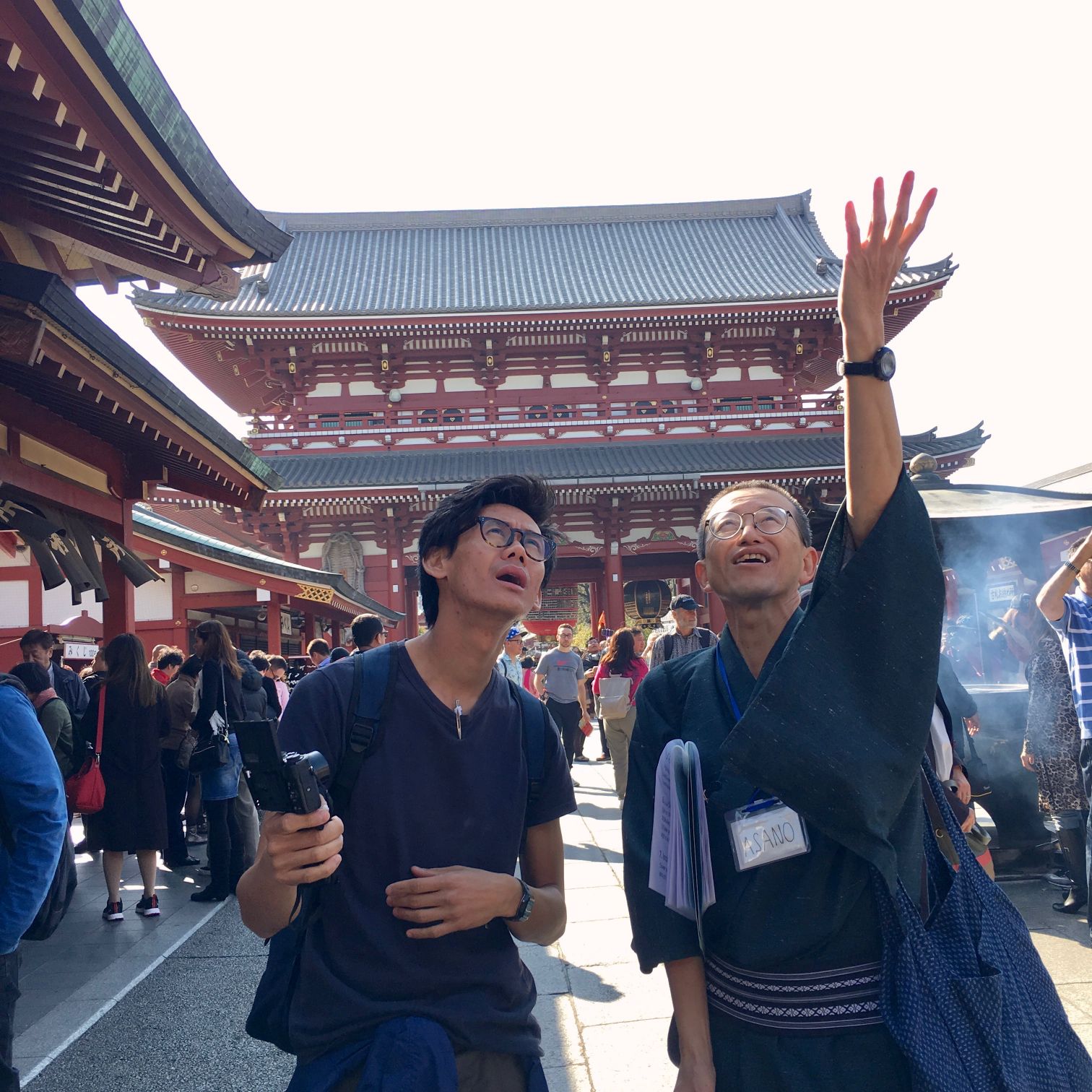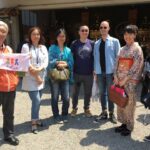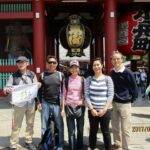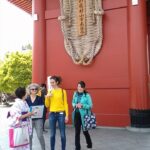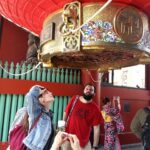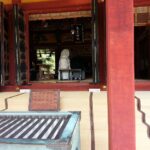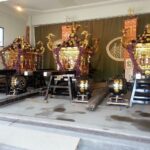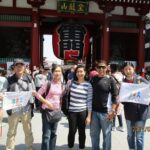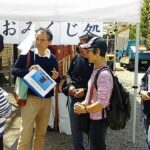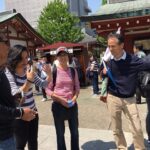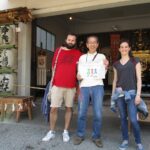Thank you for joining Tokyo Free Walking Tour of Asakusa area.
We welcomed more than ten guests on that day.
Did you enjoy the tour?
Did you find your ideal items?
The weather was perfect at around 20 degrees Celsius.
As this chart shows, we started with Asakusa Tourist Info. Center and ended at Asakusa Shinto shrine.
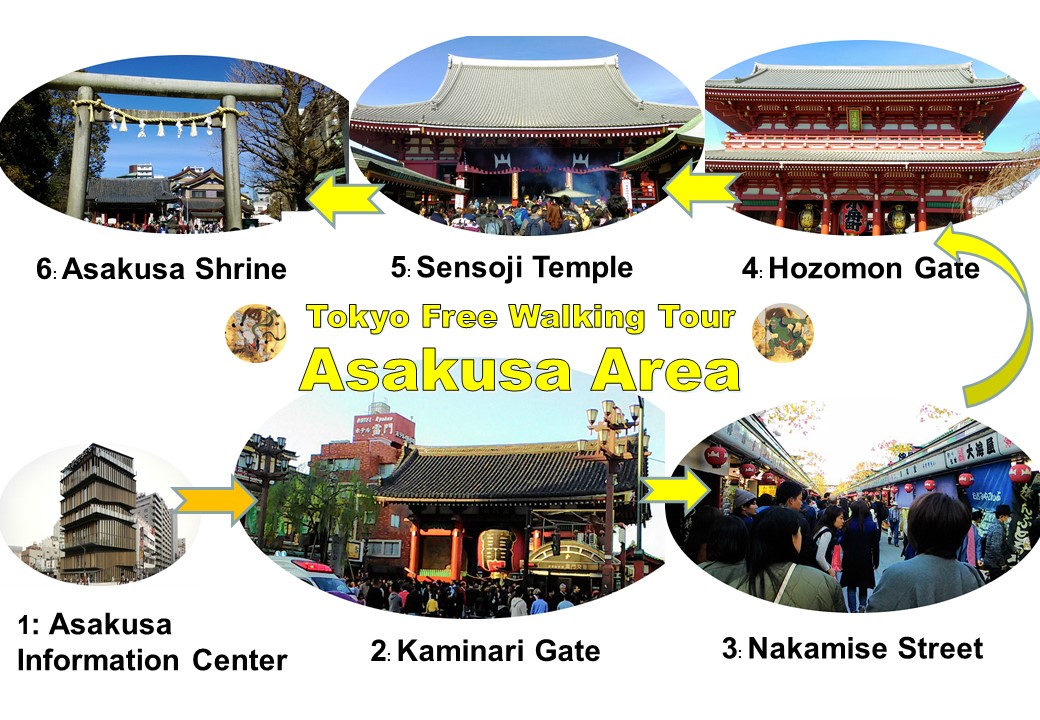
In this historical location, visitors can have a lot of options like shopping salable items or strolling in historical assets like Sensoji Templ and Asakusa Shinto Shrine.
Furthermore, we hope you’ll get interested in the two types of diets you can see in these religious compounds as follows.
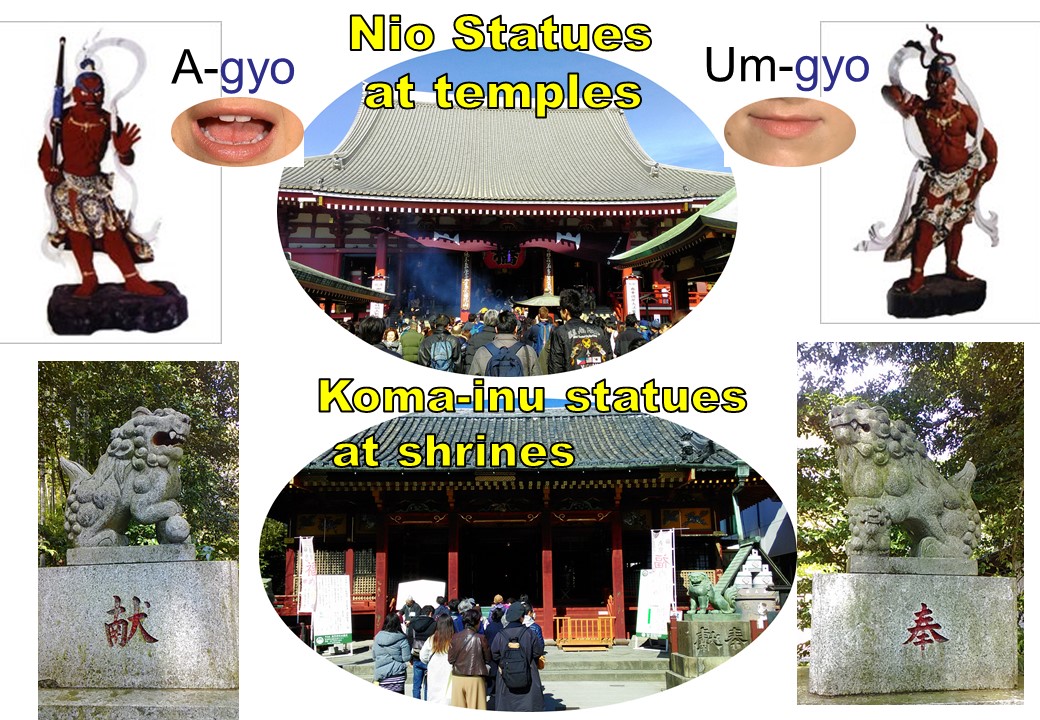
“Nio Statues” & “Koma-inu Statues”( An excerpt from guide scripts)
Let’s take a close look at the mouths of these statues.
These statues are called Nio Statues and they are often in pairs. It can be seen in most temples, not only in Japan but also in other neighboring Asian countries.
The statue on the left side is call “A-gyou” because it has an open mouth resembling the way the sound of letter A or “AH” is pronounced.
It instructs us to be open to spiritual awakening and be thoroughly insightful in engaging and doing everything. It also enlightens us to seek the truth with open eyes.
On the other hand, the statue on the right is call the Um-gyou. It is named for the same reason as A-gyou, because it is similar to the way the “Um” sound or “NN” is pronounced with a slightly closed mouth.
This statue urges us to drive away evil, which can take advantage of our spiritual weaknesses such as anxiety, anger, depression, and others. Therefore, both guardians work together to give us useful lessons in line with our personal difficulties.
Similarly, we can see the same type of paired statues but this time in form of a lion-like animal. They are called the Koma-inu and can be found in Shinto shrines.
Both the Koma-inu’s positions and mouth styles are totally similar to these statues found in Temples (Nio Statue).
This means that both religious places — temples and Shinto shrines– have co-existed in Japan for a long time.
(By Arac)

